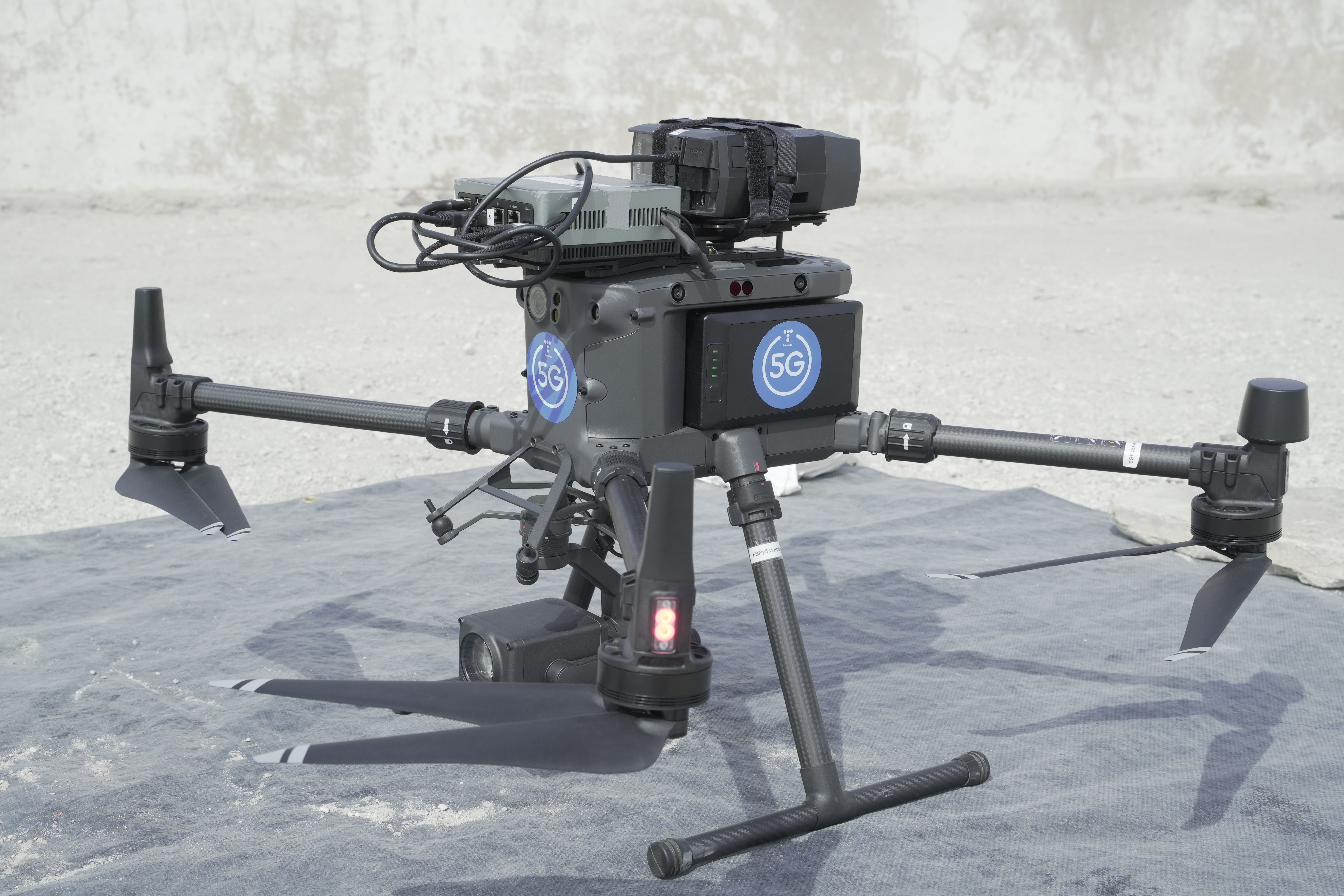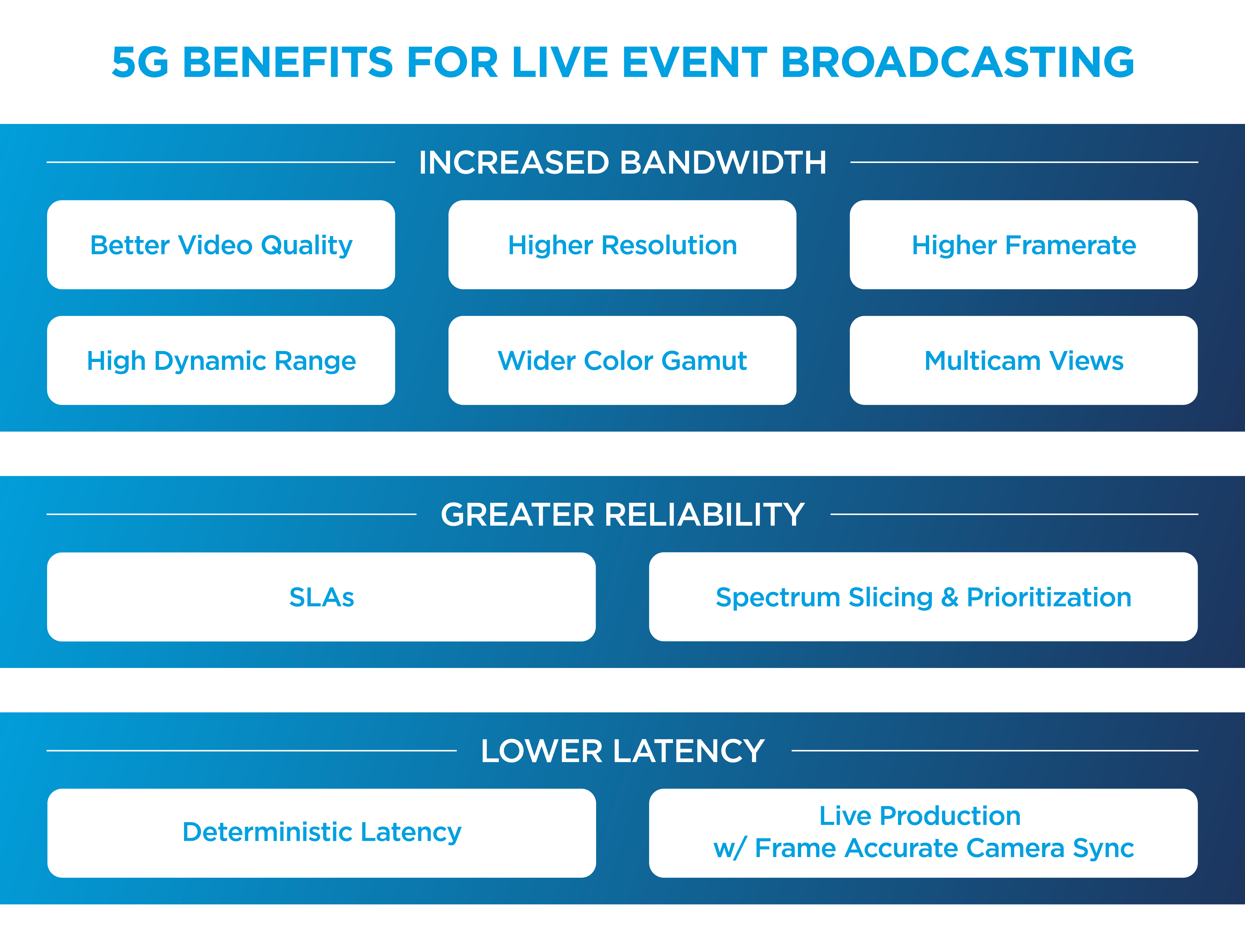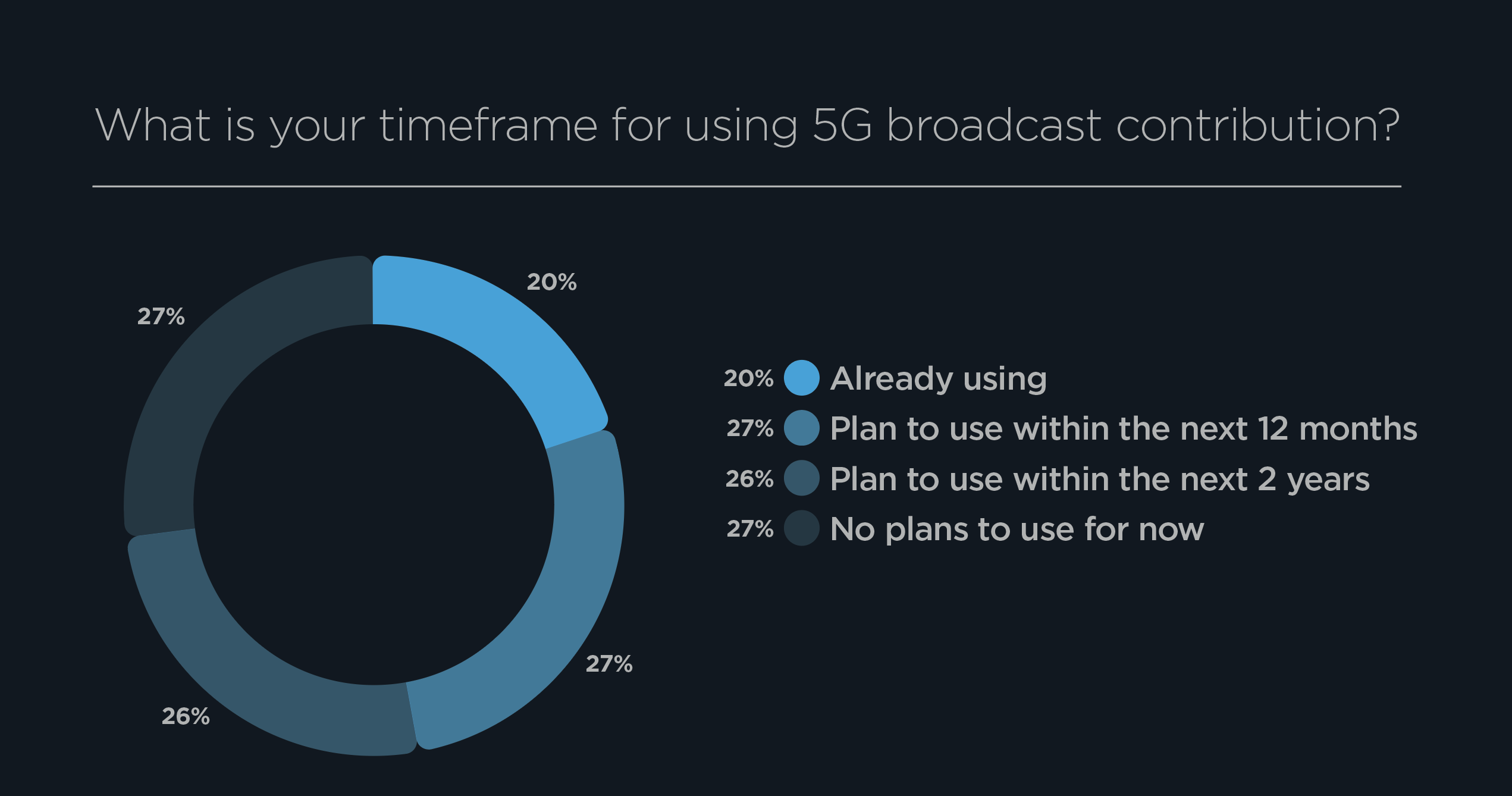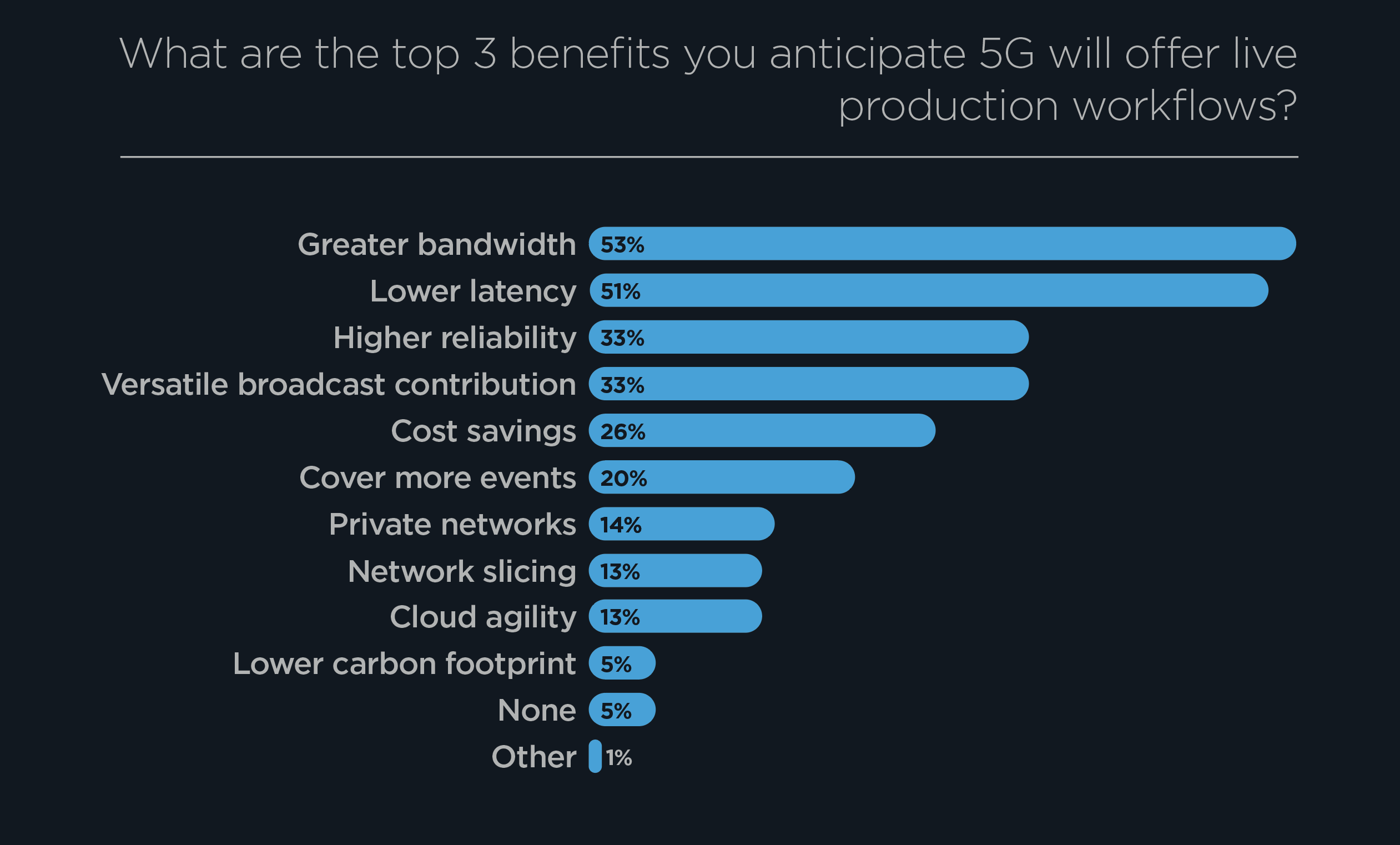
5G rollouts, both public and private, continue to create innovative opportunities for live sports and events broadcasting, especially remote production. In our work supporting some of the world’s major broadcasters, it’s clear that the benefits of 5G connectivity for live broadcast production, especially lower latency and greater bandwidth, are ready to be realized. We’ve compiled these insights into a white paper that reflects on the current state of 5G and the impact this technology has on remote broadcasts: Unlocking the Potential of 5G for Live Broadcast Production.
Diving Headfirst into 5G
As 5G becomes more widely available, its use for broadcast contribution and remote production has steadily increased, with major industry players leveraging Haivision’s 5G-enabled video transmitters and mobile encoders for live contribution of sports, news, and other events. Recent examples include Telefonica’s Spain SailGP drone coverage, TV2 Denmark’s live coverage of the Danish Elections, as well as over 20 global broadcasters leveraging the world’s largest non-public 5G network for HM King Charles III’s coronation which all proved successful thanks to 5G network slicing and non-private networks (NPN).

The white paper addresses some of the key concerns when adopting 5G including network availability while exploring non stand-alone versus standalone modes, network slicing, private (or non-public) networks, mobile edge computing (MEC) and more.
Increased Bandwidth, Greater Reliability, Lower Latency: The Benefits of 5G
With much higher bandwidth and much lower latency compared to previous cellular network technologies, 5G is increasingly replacing satellite uplinks and RF for mobile broadcast contribution. With viewers demanding high-quality viewing experiences including in 4K UHD and HDR, the demand for bandwidth will only increase. Low latency, especially over private networks, combined with the high bandwidth needed to support 4:2:2 10-bit contribution video, is enabling live broadcast producers to increasingly rely on 5G for covering premium sports and newsworthy events.

Mobile transmitters such as the Haivision Pro460 are able to produce great live broadcast experiences with low latency video contribution along with return feeds, bidirectional audio, and IP control of PTZ cameras all over 5G networks. As private 5G and network slicing become ever more present in sports venues, outdoor locations, and other field locations, the decision to deploy mobile remote production workflows will become even more appealing.

Preparing for 5G Connectivity
In Haivision’s 2023 Broadcast Transformation Report, 20% of those we surveyed indicated that they are already reaping the benefits 5G has to offer for broadcast contribution, while 53% plan to start using it within the next two years. Recognizing the benefits of greater bandwidth, lower latency, higher reliability, and versatile broadcast contribution, broadcasters seem to be warming up to the flexibility 5G offers and the innovative possibilities for live production workflows.


Within this 5G white paper, we dive into exactly what 5G is, its key features and deployment stages, and why it’s the way of the future for remote production. Download Haivision’s white paper, Unlocking the Potential of 5G for Live Broadcast Production, to transform your live broadcast with 5G’s innovative technology.






